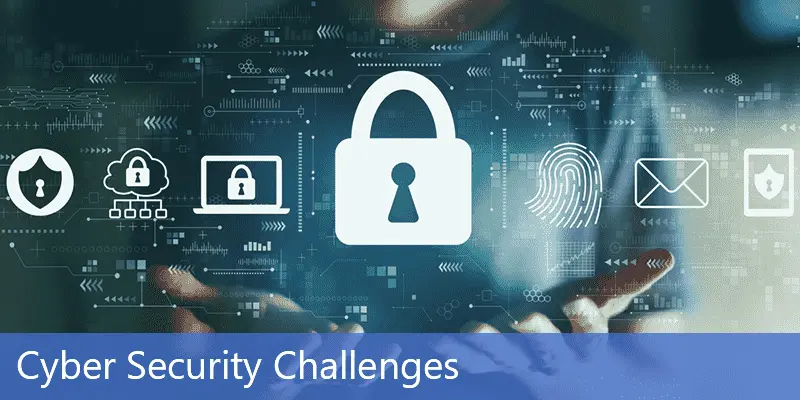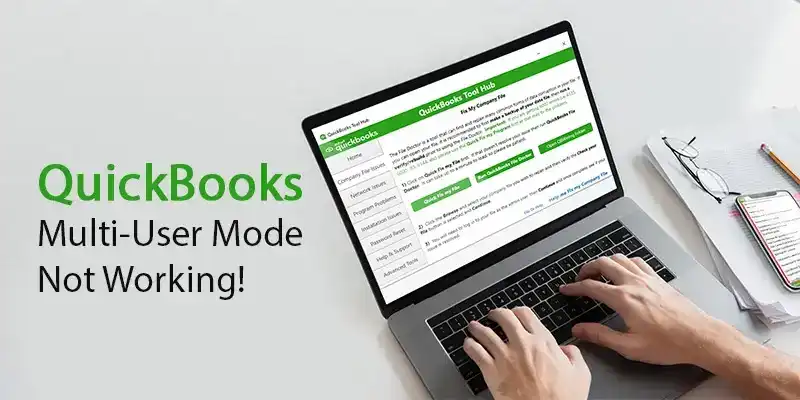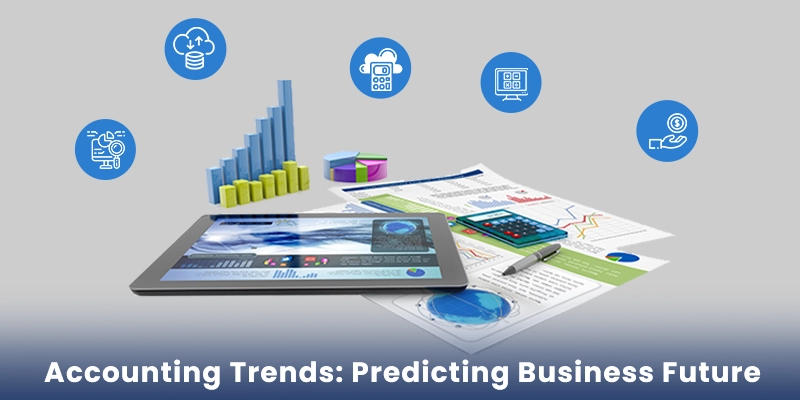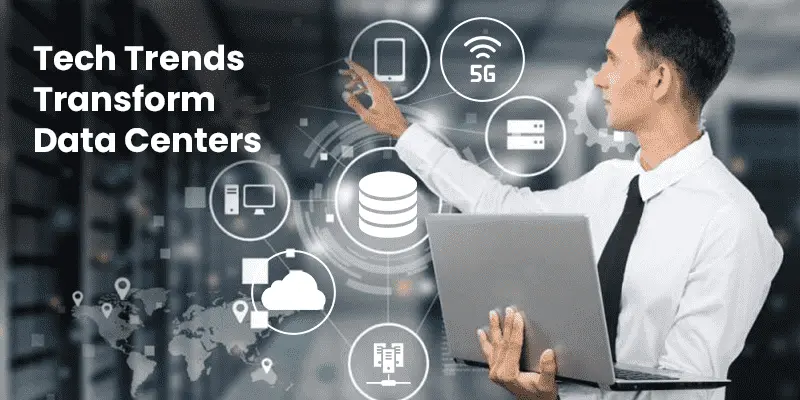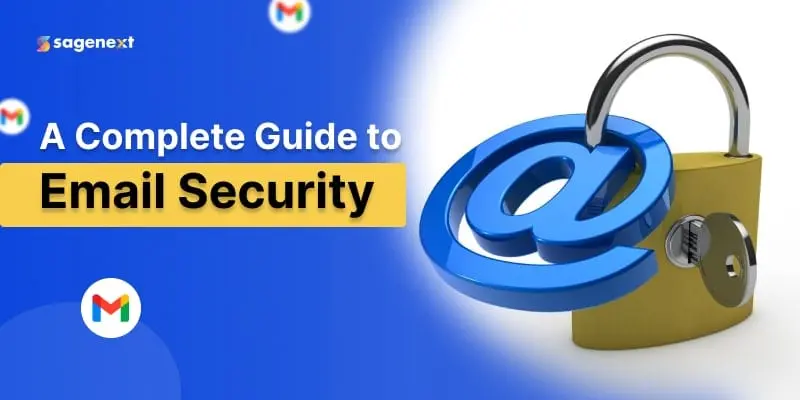
All You Need To Know About Email Security. Threats and Best Practices
Communication through e-mails is of extreme importance to organizations. It can be access from numerous devices and varied locations. Different types of media can be sent through mail; their content may be put in the mail itself or attach to it. Large attacks of any organizations are targeted to emails because thieves often try phishing and all sorts of tricks. Emails, too, carry sensitive business data. Email security, therefore, is meant as the safety of an email account and its messages from unauthorized access, loss, or harm. This includes forming the rules and using tools for defending against all forms of malicious threats such as malware, BEC, phishing attacks. In addition, it may ensure private messages in the email which are accurate and available.
Why Is Email Security Important?
More than twenty years have passed since email became the primary means of communication at work. According to statistics, an average worker receives more than 120 e-mails a day. That provides cyber crooks with opportunities to steal valuable information through such methods as business email compromise (BEC) attacks, phishing scams, and others.
Also Read: What are the Top 10 Emerging Cybersecurity Challenges?
How Safe Is Email?
Email is meant to be open and accessible to anyone. It enables a member of an organization to communicate with other staff members, people outside the organization, and third parties in general. However, attackers exploit this openness. They take advantage of loopholes in email security regarding issues like spam, malware, phishing attacks, and business email scams. Many organizations use email for business, so attackers take advantage of email to steal important information.
Email is an open format, so anyone who can catch it can see it. This raises questions on the email’s security. It becomes a problem when organizations send sensitive private information through email. Without special protective measures, attackers can catch email messages and easily read what they say.
Over the years, organizations have continued improving their email security in order to make it more challenging for attackers to access sensitive and private information and utilize emails for malicious purposes.
Common Email Problems and How to Fix Them
1. Can’t Send or Get Emails
There may be several reasons for the failure to send or receive emails, for example,
- The user might have lost the internet connection. Therefore, first check whether the internet connection is working or not.
- If Internet connection is available, check email setup by clicking on ‘File’ then ‘Account Settings’. The settings are accessed by clicking on the email address. (These change with different service providers).
- The mail server for sending and receiving emails should be ‘mail.yourdomain.com.’ The incoming port numbers vary based on the email service provider. For Google, the incoming port number needs to be 995 for POP3 or 993 for IMAP. The outgoing port number should be 587 for TLS and 465 for SSL.
- Ensure that authentication is turned on for the outgoing server. Should problems persist, delete the account and then set it up again.
2. Unable to Receive Emails But Able To Send Them
The following steps can be useful.
- The user should attempt to send an email to their account. If he or she receives a bounce-back message, examine the error message.
- There might be a disk quota error. Deleting some unnecessary emails can help fix the problem.
- Deleting an email requires logging onto the webmail account so that unwanted emails can be deleted. This would therefore delete on the server, thus giving room to free up disk space to receive these emails.
- If there are still no emails received, check the incoming email server settings as detailed above.
3. Unable To Send Emails But Able To Receive Them
The following steps will help solve the issue.
- Go to the ‘Advanced Settings’ on the email account, to verify the number of the outgoing port. Ideally it should be 587 or 465.
- If the problem doesn’t seem to be solved, then outgoing SMTP server settings should be checked. Check if the mail server and the outgoing port number do match one of the combinations above. Do note that the advanced settings do require authentication to be enabled.
4. Sometimes, Certain Emails Go Missing.
There could be different reasons why some emails go missing. Here is how to correct this error.
- Log on to the webmail account to see if it actually received the mail.
- If it has received them, then there may be something wrong with the email program. Look for any problems with redirections and look in other folders to ensure that the emails haven’t somehow migrated themselves somewhere else.
- In case the emails are not on the webmail account, request the sender if they have received any bounce-back.
- The sender may be experiencing some issues. Then, the issue needs to be rectified at the sender’s end.
5. Disk Quota Error
If disk quota error occurs, then the following should be done.
- When setting up an email account, users receive a specific amount of space on the server to store their emails. For instance, with Gmail, it is usually 15GB (for a basic or free account). Go to Settings and check out the storage options. It will show how much memory the email account has consumed.
- If all the memory is used out, a user finds a disk quota error. The best option is to remove unwanted emails from the inbox. During this process, it is important to log into the webmail account and delete the email. Otherwise, the e-mail will remain on the server. In his case, let your customers know that it is impossible to retrieve deleted emails. In order not to delete emails, customers can purchase additional disk space via the customer portal.
6. Receiving Duplicate Emails Consistently.
Normally, duplicate emails are not usual. However, the remedial measures for it are as follows:
- Check the mailbox for rules that could cause duplication of emails. Delete the rules that are not necessary.
- If the user has activated the email account on different devices, then settings should be set correctly on all the devices.
Knowing Common Email Security Threats
- Malware: Emails are particularly effective for delivering malware. Malware can be attached directly to emails, embedded in documents, or shared through cloud-based storage. Once installed, malware can steal sensitive information or encrypt files.
- Spam: Spam refers to unsolicited bulk emails, often containing advertisements, but it can also spread malware, trick recipients into revealing personal details, and lead to financial loss. Spammers use programs called ‘harvesters’ to collect email addresses from websites and online services. Spam wastes resources and can harm organizations, making it critical to filter out such emails before they reach corporate accounts.
- Data Loss: Email accounts store large amounts of sensitive data. They can also serve as gateways to cloud-based services, giving attackers access to critical information. Email account credentials are common targets for attacks, and sensitive information can also be unintentionally shared by employees who fall victim to phishing attacks.
- Phishing: The most common mail security threat is phishing. Nigerian Prince Scam is considered amongst the first phishing attacks. Although it is quite easy to recognize such attacks today, phishing attacks have become more sophisticated over time. Attackers now send more convincing emails with plausible excuses and scams. Phishing can be either generic or specifically aimed at you. These targeted attacks, known as spear phishing, are thoroughly researched and crafted to deceive certain individuals or groups, especially those with special access or privileges.
- Quishing: Quishing is a form of QR code phishing or scam. The malicious URL is hidden behind a QR code, turning the link into an image file rather than a clickable element. Secure email gateways (SEGs) and modern email security solutions that scan emails for suspicious links often overlook URLs embedded in images or file attachments. Quishing campaigns present a particular challenge for defenders. By embedding the phishing link within a QR code, the threat becomes concealed, allowing it to bypass security measures and reach the inbox of the targeted end user.
- Authentication Attacks on Email Servers: Attackers sometimes target email servers directly using brute force or credential stuffing techniques. This grants access to all stored emails and attachments, enabling attackers to launch convincing phishing attacks by impersonating users.
- Botnets and DDoS: A botnet is a collection of interconnected computers or devices that have been compromised by hackers and have installed a form of malicious software called bot. Botnets are most commonly used in large scale spam and phishing attacks. Botnets are also used in Distributed Denial of Service (DDoS) attacks, making a huge number of requests to networks in an attempt to cause them to collapse. It is just like the conventional DDoS; the attacker floods the victim’s web server, in the same way, with hijacked botnets the attacker can send mails to the targeted organization to an extent that the email server crashes.
Also Read: Comprehensive Guide to Troubleshooting Email Issues and Enhancing Email Security
Essential Tips to Achieve Secure Email Environment in Your Organization
1. Protect Email Accounts with Sender Authentication
It reduces the occurrences of phishing attacks, email spoofing, and Business Email Compromise (BEC) since it assures that email is from a genuine sender through encryption standards and protocols. Common email authentication standards are:
- Sender Policy Framework (SPF) which is an open standard that defines how to prevent the forgery of the sender address.
- Domain Keys Identified Mail (DKIM) which offers domain permissions and digital signatories to ensure that the message has not been fraudulently produced.
- Domain-based Message Authentication, Reporting & Conformance (DMARC) – using mechanisms used by SPF and DKIM, domain owners can specify what actions are to be taken if email out of their domain fails an authentication check.
2. Block Spam and Unwanted Senders
Having a spam filter is beneficial to your email account and the computer because it guards you against spam, phishing scams, and other threatening or unnecessary communications. A spam filter is thus an anti-malware tool that is programmed to detect and block spam and phishing mails from reaching your mail client. It is recommended that you use a spam filter to protect yourself from such threats and to minimize the possibility of your email account being hacked.
There are several types of spam filters, and all of them can be customized according to the user’s preferences. There are client and server based spam filters like those that are integrated into particular email client or server software and there are standalone spam filtering applications that can be downloaded and installed on your computer or other device. Every corporate email system comes with an instant spam filter and it is very crucial to guarantee that all the users adhere to it.
3. Attachments and Links in Emails
Messages and documents downloaded from the Internet are one of the key vectors by which cybercriminals deliver malware and conduct phishing. When you receive an email, never proceed to open the link or download the attachment without knowing who it is coming from. Don’t reply even if the sender’s identity looks familiar – their account could have been hacked.
If the link is asking for personal or financial details, one should not click on it. However, if you wish to go to the specific site, try entering the URL manually on your browser. The same stands for the attachments – do not download them unless you expect such a file and have an idea of what it is. In case of ambiguity, try to contact the sender via a different method to be certain.
4. Use Strong Passwords for Email Accounts and Don’t Reuse Passwords
Passwords are the first layers of protection against the threats in email communication, and the passwords should always be very strong and distinct. Usually, a password is a number of letters in upper and lower case, numerical digits, and characters which makes it difficult for a hacker to guess the password or use dictionary attacks/brute force.
Do not use simple passwords or passwords that are variations of your name, date of birth, or other easily obtainable information. Also, it is vital not to use the same password for any other account. It is because, if one of them gets hacked, then all the others are at risk too. It might be useful to consider using a password manager to assist with the storage and management of complex passwords.
5. Implement Multi-Factor Authentication
Enabling MFA for an email account helps you avoid unauthorized access to your email because MFA involves using more than one factor to verify your identity. Multi-factor authentication means that when you sign in to your email, you cannot use just your password as the way of getting into your account. It often requires a second factor, for instance a code sent to the phone, token, or a biometric such as a fingerprint.
This makes it very hard for the attackers to access your account even if they know your password. This can be quite beneficial for those with special email accounts containing sensitive information as it assists in protecting such information from being accessed by unauthorized persons. Most of the standard email providers and services include MFA as an option and it is recommended to enable it if the feature is available.
6. Keep Business and Personal Emails Separate
If employees use business emails for personal business, the company is subjected to various forms of security threats within the email system. For instance, if an employee is using the business email address to create personal accounts or subscribe to different services, they are likely to be granting third parties’ access to the business email system. This may lead to sending spam or phishing messages to other employees or exposing confidential business information to the wrong people.
Furthermore, employing business emails for personal reasons also results in lower productivity, because workers are preoccupied with personal mails or using companies’ resources for non-business related operations. To ensure that the company’s email system is secure and the company business communication is effective, there should be strong and clear policies that restrict the use of the company’s emails for personal use. Such policies should be well articulated in all organizations and any instance of violation of such policies should be dealt with appropriately.
7. Avoid the Use of Public Wi-Fi
It is advisable that you avoid using public Wi-Fi for email communication as your emails can be intercepted or face other security threats. Logging into a public Wi-Fi network means that you are using that network with other people, including hundreds or even thousands of individuals. This means that anyone else on the same network can potentially sniff and see what you are doing on the internet including emails.
This risk is even higher if the network used is unencrypted or if you are not connect via a virtual private network (VPN).In order to enhance the security of your email exchange, it is safer not to use free WI-FI connections as often as possible. However, if you have to connect via public Wi-Fi, it is advisable to put measures that will ensure you have an encrypted connection. This can be done through using a VPN connection, linking to an encrypted network, and being careful about what you are communicating over the network.
8. Backup Critical Files
If implemented properly, the corporate email security can help an organization to have less exposure to cyber criminals but this kind of risk cannot be avoid completely. Unfortunately, even the most secure IT systems can become the target of cyber criminals, and to mitigate against the potential consequences of a ransomware attack or other successful cyber attack, businesses must back up their files automatically on a regular basis. Companies can protect their backups by:
- Creating additional backup copies: store within the organization more copies of important data, some of which should be stored in physical media which cannot be easily accessed through the corporate network.
- Backup isolation: a system and its backups should be as separated from each other as possible because ransomware-type threats are not capable of attacking backups effectively.
- Thorough testing of backups: the recovery exercise should be conduct more often to determine issues and risks.
9. Train Employees on Email Security Best Practices
It is also crucial to remember that corporate email security is not solely about technology; it also entails educating the company’s workers and making them security-conscious. It is crucial that the general business user, admin, IT, and business units comprehend why corporate email security matters, what matters about data, and what happens after a phishing success or a data breach. Employees act as the first barrier to security threats in a firm; thus, safety training should be conduct frequently and comprehensively. This reduces the potentiality of human failure in controlling and complementing other measures of security.
Email Security Solution
Although there is no substitute for the best practices for email security in your organization, having a dedicated email security service will give your email better protection. As mention above, email security can be achiev through different types of solutions and tools namely:
1. Secure Email Gateway (SEG)
SEG examines the characteristics of an email and determines if it is legitimate or a security threat; SEG is also referre to as the most popular email security tool. SEGs can be install as standalone hardware appliances or virtual machines or more typically, are available as cloud services. In addition to basic email quarantine, these solutions also provide advanced protection features such as:In addition to basic email quarantine, these solutions also provide advanced protection features such as:
- URL Rewrite: Determining whether the URL in an email is safe to open.
- Antivirus: Virus scanning of files with help of different antivirus programs.
- Security Sandbox: Scanning the malicious files within a controlled environment.
- Spam Quarantine: Routing potentially malicious messages to the quarantine and notifying end users with the list of messages in the quarantine.
- Graymail Management: Regulations pertaining to handling bulk email that is not necessarily deemed as spam.
- Preventing Impersonation: Notifying the users to ensure that attackers do not pretend to be someone high-ranking such as the CEO or the CFO.
- Clawback: Erasing a message from a recipient’s mail after it has already been delivere.
Read Also: How to Deleting Your Gmail Account for Computer and Mobile
SEG Also Provides the Following Outbound Capabilities
- Data Loss Prevention (DLP) to prevent exposure of personally identifiable information (PII) or other sensitive data.
- Encryption of data in transit with Transport Layer Security (TLS)
- Push encryption converting a sent email into an encrypted file attached to another email.
- Pull encryption the recipient retrieves encrypted email from a secure portal.
- Sending large messages through secure portals.
Also Read: Data Integrity: Why is It Important in 2024?
2. Email Data Protection (EDP)
Email is inherently insecure. Given current regulations and privacy laws, the ability to protect, track and potentially anonymize the sensitive data shared with third parties via email is particularly important. Email data protection solutions add encryption and can help track and prevent unauthorized access to email content, before and after transmission. EDP also helps prevent accidental data loss due to incorrect recipients.
Key Capabilities of EDP Solutions Include
- Ability to block, redirect or encrypt emails based on content analysis. These capabilities are often part of a broader DLP portfolio.
- Recipient authentication, ensuring that recipients are who they say they are before allowing them to decrypt and view messages. This often requires recipients to create accounts in a messaging portal.
- Two-factor authentication, to protect against credential theft and make it more difficult for attackers to compromise encryption.
3. Integrated Cloud Email Security (ICES)
Cloud email providers like Google and Microsoft offer integrated email hygiene and security capabilities to reduce reliance on security gateways. Analyzing emails via API access eliminates the need to change the MX record. In addition to blocking known malicious content and providing recommendations, these integrated security solutions can detect compromised accounts.
Depending on the APIs used, an ICES product may be pre- or post-delivery. Pre-delivery solutions are typically implement as connectors that intercept emails before they reach the inbox. Post-delivery solutions analyze emails after they arrive and scan them before the user can open them.
Key Features of ICES Solutions Include
- Integration with cloud email provider security: ICES can use cloud email provider capabilities to block emails from known malicious senders and URLs, scan attachments for viruses, and identify spam through content analysis. This can eliminate the need for a secure email gateway.
- API access to cloud email providers: ICES solutions enable API connectivity without rerouting email or changing MX records. This simplifies deployment and maintenance.
- Inbound Notifications: When users read emails, they receive notifications to help spot malicious emails. This is also a great way to reinforce security awareness training. ICES also includes phishing alerts and mechanisms for users to report emails with suspicious content.
- Details Regarding Internal Email Traffic: Monitoring internal email traffic is critical to detecting insider threats and compromised accounts. ICES uses thousands of signals in a cloud environment to detect suspicious internal emails.
- Advanced Detection Techniques: ICES uses advanced techniques such as natural language processing (NLP), natural language understanding (NLU), and image recognition, to detect malicious emails by evaluating tone, language, and context.
- In-Depth Email Analysis: ICES can learn about a user’s normal behavior analyzing past email activity, communication patterns, general tone and content. Establishing this baseline helps the detect suspicious behavior that may indicate account takeover.
- End-to-End Encryption: Email encryption helps protect sensitive data and may be require for various compliance standards.
- In-Built Mailbox Triage: For understanding how users interact with unsolicited email such as spam and graymail, and using these insights to automatically route emails to the appropriate folders, eliminating the need for complex policy management.
Conclusion:
Considering the fact that email today is the most common and vital form of communication for businesses, email security has become an indispensable topic of discussion and an essential component of internet safety nowadays. Despite its simplicity, email is extremely vulnerable to a variety of cyber threats, including phishing, malware, and business email compromise (BEC).
To protect themselves against these risks, firms must employ strong security measures such as multi-factor authentication, secure passwords, and adequate spam filtering.
Maintaining a safe email environment requires employee training, regular data backups, and the usage of email security tools such as Secure Email Gateways (SEG) apart from others. Finally, a proactive approach to email security can help organizations safeguard sensitive information and avoid major financial and reputational damage.

